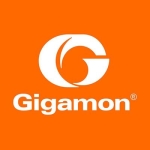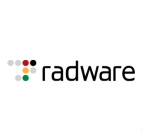What is our primary use case?
Our company uses two versions of F5 Advanced WAF. The solution is used to protect against web hacking bots.
How has it helped my organization?
F5 Advanced WAF has improved our organization's security posture by fending off all types of attacks. The solution has been successful in mitigating not just one kind of attack but also rare attacks that disturb the OS and try to achieve a denial of service. The solution has saved our company from performance deterioration and also enhanced security.
What is most valuable?
The solution's most valuable features include application DDoS protection, bot blocking, and HTTP header verifications. The solution protects against seven types of DDoS attacks.
What needs improvement?
More legacy protocols should be added to the solution. The aforementioned protocols are generally less used and might have been phased out from multiple solutions. But some of the large corporations that are clients of our company are unwilling to let go of applications that have been developed.
The aforementioned clients believe that as some of the new websites do not use these technologies, it wouldn't be ideal to replace the existing applications; for example, a bank with millions of dollars connected to a software wouldn't be willing to replace it instantly.
It often takes years for enterprise-level businesses to replace applications. The vendor of F5 Advanced WAF needs to consider that even if legacy protocols are not necessarily used for new projects, existing or prior applications projects rely heavily on them, and such protocols need to be protected until they are completely phased out of the market.
The vendor needs to provide complete support for the legacy protocols, just like the latest protocols in the market, until they are assured that none of the customers are using them.
I would like to witness the expansion of the supported protocols set by the solution. The tool should be promoted as an advanced protection solution that supports all types of protocols. In future versions, some protocols offered by the solution need to be more specialized. All public-facing protocols should be added to F5 Advanced WAF.
For how long have I used the solution?
I have been using F5 Advanced WAF since 2018.
What do I think about the stability of the solution?
If the solution is setup by professional services, then it will exhibit outstanding stability, otherwise there might be issues. I would rate the stability an eight out of ten.
What do I think about the scalability of the solution?
I would rate the scalability a nine out of ten. The solution is highly scalable and accommodating. The solution also allows troubleshooting due to its scaling capacity. The backend system of the solution allows the accommodation of solutions that one can pickup.
In our company, there are about ten users of F5 Advanced WAF, and it's being used daily. Our organization also plans to increase the usage and the number of users for the solution. The tool's performance has benefitted application delivery in our organization.
How are customer service and support?
I would rate the tech support a seven out of ten. The tech support quality is slightly above average. The support team's first responders to raise tickets are not skilled engineers.
Large enterprises usually expect their issues to be resolved within a few minutes, so in a support process where first responders collect information and if they are unable to tackle it, the issue gets escalated, which overall becomes a huge, time-consuming process. The vendor should provide highly skilled first responders to large clients of F5 Advanced WAF, as for each second the solution is down, the clients might be losing money.
How would you rate customer service and support?
Which solution did I use previously and why did I switch?
Before F5 Advanced WAF, our organization used IPS and Fortinet. Fortinet could only handle simple tasks, and F5 Advanced WAF is better for specialized application protection and scalability. Fortinet has a quick and easy setup process that doesn't require highly skilled engineers, making it suitable for resource management.
How was the initial setup?
I would rate the initial setup a seven out of ten. F5 Advanced WAF offers an easy setup process. Our company works with both the cloud and on-premise versions of the product. The solution's deployment, including the configuration, can takefour to five days. One engineer is enough to deploy F5 Advanced WAF for a single system.
The frequency of maintenance depends upon the setup of the solution; in case of faulty setup, the administration overhead will be greater due to repeated maintenance needs to fix issues. Often, customers invest in professional services to setup F5 Advanced WAF, following which an engineer can implement the maintenance. If professional services are not availed to setup the solution, it can take up to a month.
What was our ROI?
The solution provides an ROI. When professional services install it, it has low administrative overhead and increases performance due to its scaling capacity. The solution can be used with any specific client or application as it allows user programming to be open-source. With F5 Advanced WAF, our company is able to adapt to the versatile requirements of clients. I would rate the ROI of the solution a nine out of ten.
What's my experience with pricing, setup cost, and licensing?
I would rate the pricing as seven out of ten. Sometimes, for specific models, additional licenses over the standard one need to be purchased. F5 Advanced WAF doesn't offer a single license that fits all use cases; the user needs to choose the license format. A structured license is usually preferred for F5 Advanced WAF.
Which other solutions did I evaluate?
Our company also evaluated Palo Alto products, but F5 Advanced WAF offered superior scalability.
What other advice do I have?
The solution mainly provides automated responses; once the solution is set up and trained properly, it requires minimal intervention. As the solution is completely automated our company team has to only check the reports.
But there is an elaborate setup process where, as part of our company, we deploy applications in an environment, implement work policies, and use automated software to simulate multi-vendor attacks and web hacking to test the solution's ability to detect attacks and, accordingly, we make adjustments to the flexible solution.
After the simulation testing, the policy implemented for the solution is put in a station period where it won't be flexible initially, and then reporting is implemented, which will escalate to the anticipated restriction level soon.
After the policies' staging period, when the solution has completed learning through simulations and our company feels confident with the test product in the active environment, the solution becomes automated from that point, and manual intervention is not necessary. A highly skilled team is needed for the abovementioned solution training process.
Our company develops multiple applications internally as our work sites are not ready, and varying results are expected from different work sites, webpages, or newly added features. When a new feature is added to the solution, we revert back to the deployment process to test it. Our company needs to ensure that the in-house developed features that are integrated into the solution are not prone to attacks through simulation testing every time.
Our company feels confident when the solution's policies are developed through the staging, simulation and rule enforcement process. The aforementioned process helps with reports and also with performance. In our company, we have also encountered websites that didn't function well with the solution; even though the websites were functioning properly, the performance deteriorated slowly. Many attackers nowadays venture beyond the threshold, which might be difficult to capture.
If we consider any service or web applications over the internet that is attacked beyond the threshold, it wouldn't be a blind attack for the application owners as it would get blocked immediately, but instead, they progress slowly with the attack and ramp up once they can change the IP addresses and identify a suitable angle of attack, until these attacks get blocked they can affect your service.
Sometimes, a few of our organization's clients complain about the solution working slowly, even without apparent attacks. For example, if you're a trader, the website might function well enough most of the time, but sometimes you have to buy or sell within minutes, whereas if it doesn't work, you need to visit a different website, which can also be the goal of attackers.
F5 Advanced WAF also allows you to write your own code for the interface. F5 Advanced WAF specializes in behavior identification, which helps in superior attack mitigation. I would advise others to get the solution setup only by specialized or professional services. I would rate F5 Advanced WAF a nine out of ten.
If public cloud, private cloud, or hybrid cloud, which cloud provider do you use?
Amazon Web Services (AWS)
Disclosure: My company does not have a business relationship with this vendor other than being a customer.




















